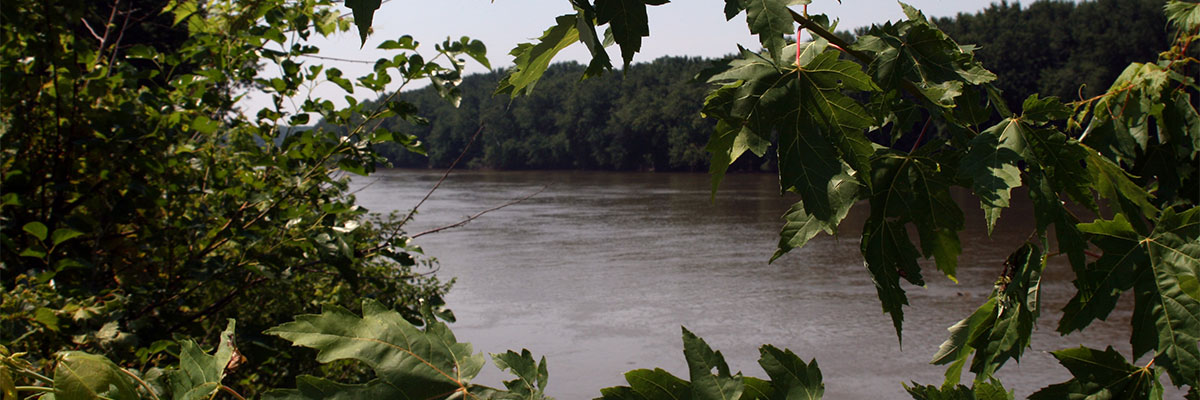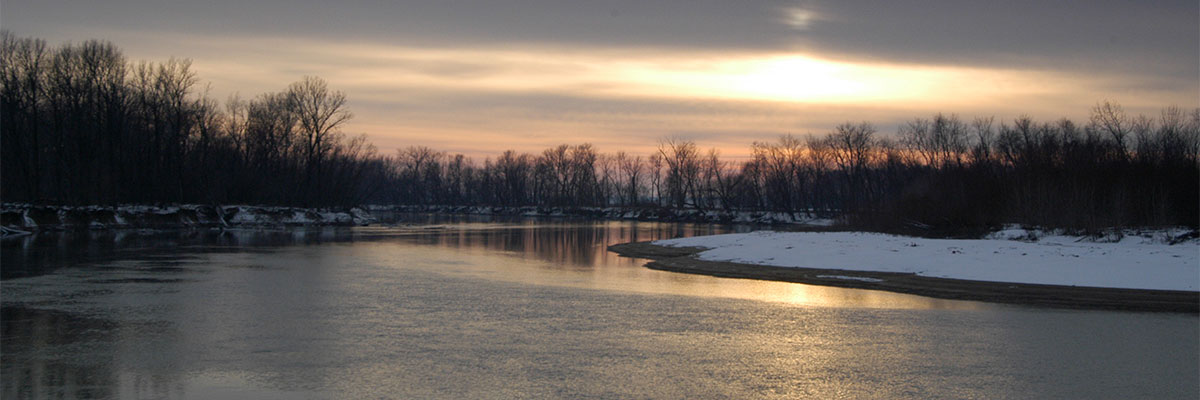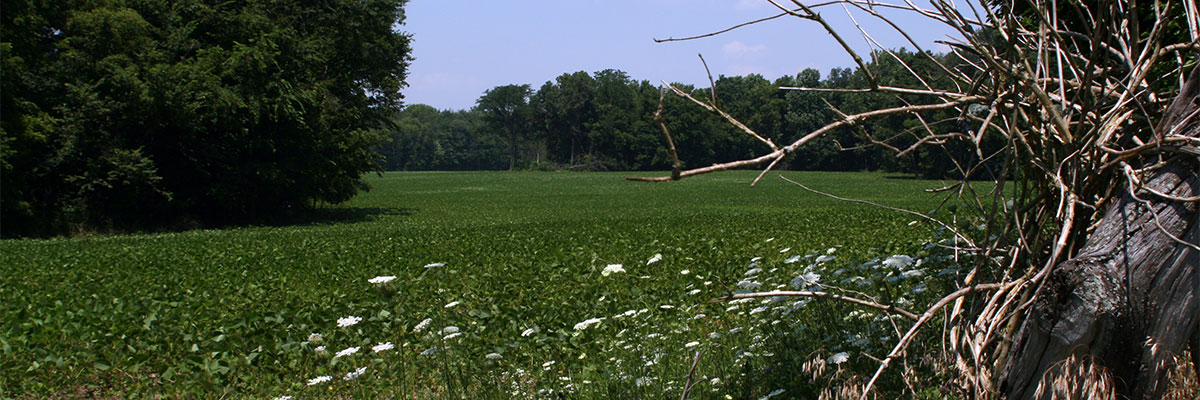- Fairbanks Landing FWA Alerts
- None at this time.
Description
Fairbanks Landing Fish & Wildlife Area (FWA) in Sullivan County provides quality outdoor recreation opportunities on 8,030 acres of bottomland hardwoods, agriculture fields, prairie, and riparian habitat. Fairbanks Landing FWA rests along the Wabash River and is a great spot for fishing and birdwatching.
Fairbanks Landing was obtained and is being operated thanks to an agreement between Indiana-Michigan Power and the Indiana DNR Division of Fish & Wildlife.
Popular activities
All hunters, range users, and dog runners are required to sign in and obtain the appropriate one-day access permit before entering the field at this property. The one-day permit card must be completed and returned to a self-service booth, drop box, or property office before you leave.
All other visitors are encouraged to obtain a miscellaneous one-day access permit before entering the field. The one-day access permit should be kept with you while visiting, then completed and returned to a self-service booth, drop box, or the office before you leave. The information you provide will help us identify ways to improve Indiana’s FWAs for all users. We appreciate your patience in taking the extra time to complete the permit. Your feedback and comments are valuable to us.
- Fishing
- Fishing is allowed at Fairbanks Landing FWA. Please park in designated areas only.
- There is a boat ramp into the Wabash River on the southern end of the property.
- Boats not being used on the river are limited to a maximum 12-volt electric motor.
- Channel catfish, bluegill, redear, and largemouth bass are the major species present.
- For more information on fishing opportunities visit the fishing page.
- To find more places to fish visit the Where to Fish map.
- Hunting
- Hunting for deer, rabbit, squirrel, raccoon, coyote, and turkey is common at Fairbanks Landing Fish & Wildlife Area.
- All hunting seasons and bag limits apply. See Hunting Regulations for details.
- Fairbanks Landing FWA participates in all youth hunting seasons.
Deer
- The first two days of deer firearms season is by reserve draw only. All other deer hunting is by self-service.
- Deer stands are allowed overnight between Sept. 15 and Jan. 10. Tree stands must be marked with the owner’s name, address, and phone number OR the owner’s DNR Customer ID Number.
Turkey
- The first five days of spring turkey hunting is by reserve draw only.
- Spring turkey hunting hours end at 1 p.m. and hunters must leave the field by 2 p.m.
- Fall season: Hunting is permitted by daily self-service check-in.
Waterfowl
- During waterfowl season, there are no daily drawings.
- Trapping
- Trapping is by self-service sign-in procedures. Please contact Deer Creek FWA for details.
- View statewide trapping regulations in the Hunting & Trapping Guide.
- Wildlife watching and birding
- Fairbanks Landing FWA’s 8,030 acres include bottomland hardwoods and adjoining farmlands along the Wabash River attracting deer, wild turkey, waterfowl, hawks, owls, osprey, bald eagles, and a wide variety of songbirds.
- Fairbanks Landing is a great place to view woodland birds as they migrate in the Spring and Fall.
More activities
- Biking
- Bicycling is allowed on all paved and gravel roads that are open to vehicle travel. There are no mountain bike trails and off-road travel is prohibited.
- Dog running
- Dog training is permitted in the designated area shown on the property map. This area extends north from C.R. 1050 N to C.R. 1150 N and east from C.R. 800 W to C.R. 675 W.
- Dogs must always be leashed outside of the dog running and training area unless being used by a registered hunter in the pursuit of game.
- A valid hunting license is required for running dogs in the pursuit of wild game.
- Foraging
- Mushrooms, berries, greens, and nuts may be gathered; however, a written permit is required to remove plants, animals, rocks, and fossils.
- Greens are the above ground portion of asparagus, dandelion, mustard, plantain, and poke.
- Mushroom hunters must not enter the field before 1 p.m. during spring turkey season.
- During hunting seasons, foraging should only be done when wearing orange or another bright color.
- Hiking & walking
- Hiking & walking is permitted on Fairbanks Landing FWA. There are no established trails, but plenty of roadways and game trails to walk.
- During hunting seasons, hiking and walking should only be done when wearing orange or another bright color.
- Water recreation
- Boat launching from a trailer is allowed only at the boat ramp into the Wabash River.
- Canoes, kayaks, and other small watercraft that can be carried and slid into the water are permissible for use on the rest of the property.
- Excluding the Wabash River, boats are limited to a maximum 12-volt electric motor.
- Anyone in a boat, canoe, kayak, or on a paddleboard must be in possession of a wearable personal flotation device (PFD) while on the water.
- Swimming is NOT allowed.
- Volunteering
- Need a reason to get outside and move? You can volunteer alone or in small groups at this property. Some activities include trash pick-up, basic gardening, painting, and more. Call the property office for details.
- While you’re at Fairbanks Landing Fish & Wildlife Area, have fun and fill a bucket with trash. You can bring your own 5-gallon bucket and pack out the trash with you.
- Report your good work by posting a photo on the Facebook group page "5-gallon challenge" and use the hashtag #bucketINtrashOUT. Every bucket counts.
- Your small act of kindness helps to keep our public lands healthy and beautiful.
Other properties managed by Deer Creek Fish & Wildlife Area (FWA)
- Chinook FWA is 2,141 acres of reclaimed surface mine land near Vigo County in western Clay County. Approximately 80 acres of the property is water (mostly strip pits). Originally, it was leased as a Public Fishing Area in 1982, but Chinook opened in 1997 as a Fish & Wildlife Area open to the public. Hunting, fishing, trapping, and other outdoor recreational opportunities are available.
- Deer Creek FWA is 2,175 acres in a mixture of mature oak/hickory woods and open rolling native grasses and agriculture in Putnam County. The land that compromises most of Deer Creek was originally transferred from the Putnamville Correctional Facility to the DNR in 2010 and several more parcels have been bought since then. It is open to the public and hunting, fishing, trapping, and other outdoor recreational opportunities are available.
- Green Valley Wildlife Management Area is 150 acres of wooded ground in Vigo County, Indiana. Green Valley Lake was originally constructed as a water supply reservoir for a coal mining operation. The property was purchased by the Department of Natural Resources in the mid-1960s and opened to the public. Hunting, fishing, trapping, and other outdoor recreational opportunities are available. More information.
- Sugar Creek Conservation Area begins along the tributary creek at Shades State Park and run south-southwest, ending at Jackson Bridge in Parke County. It encompasses 1,321 acres of diverse terrain and is open to the public. Hunting, fishing, trapping, and other outdoor recreational opportunities are available.
- Wabash River Conservation Area begins along the banks of Wabash near Montezuma, IN and runs south-southwest, stretching across four counties - Parke, Vermillion, Vigo, and Sullivan - ending at Fairbanks Landing FWA, south of Terre Haute. It encompasses 2,452 acres of primarily floodplain and is open to the public. Hunting, fishing, trapping, and other outdoor recreational opportunities are available.
- Wabashiki FWA is composed of 3,652 acres of floodplain along the Wabash River. In 2010, Vigo County Parks Department and the Department of Natural Resources joined together in a cooperative effort to offer this bird viewing paradise to all its patrons. Hunting, fishing, trapping, and other outdoor recreational opportunities are available.



